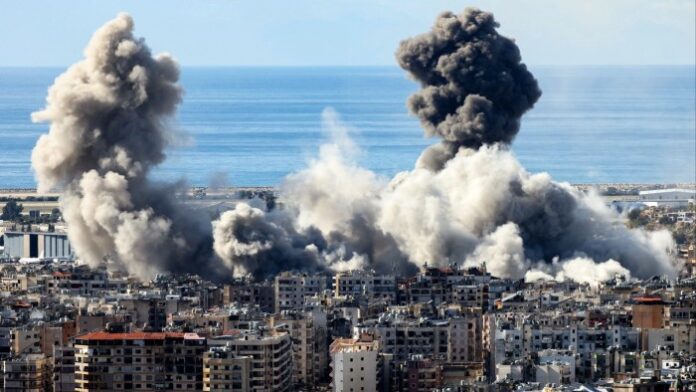Unlock the Editor’s Digest for free
Roula Khalaf, Editor of the FT, selects her favourite stories in this weekly newsletter.
Israeli Prime Minister Benjamin Netanyahu has announced plans for a ceasefire with Hizbollah, raising hopes of an end to the year-long hostilities between Israeli forces and the Lebanese militant group.
In a pre-recorded television address on Tuesday, Netanyahu said he would take the proposed deal to Israel’s cabinet. It must also be approved by Lebanon’s caretaker government, which is due to discuss it on Wednesday.
Netanyahu said the “duration of the ceasefire depends on what will happen in Lebanon”, and that he had reached “full understandings” with the US that Israel will maintain “full military freedom of action” in the event that Iran-backed Hizbollah violates the agreement.
“If Hizbollah violates the agreement and tries to arm itself — we will attack,” Netanyahu said. “If it tries to rebuild terrorist infrastructure near the border — we will attack. If it launches a rocket, if it digs a tunnel, if it brings in a truck with missiles — we will attack.”
Full details of the terms of the ceasefire deal were not released.
As Netanyahu spoke, the Israeli military conducted heavy air strikes across Lebanon, including several neighbourhoods in central Beirut previously untouched by the conflict, unleashing fresh panic in the Lebanese capital.
Diplomats hope the deal will pave the way for an end to one of the bloodiest rounds of fighting in decades of conflict between Israel and Hizbollah.
US President-elect Donald Trump’s national security adviser Mike Waltz welcomed the agreement.
“I’m glad to see concrete steps towards de-escalation in the Middle East,” he said in a post on X.
Waltz added Iran was the “root cause of chaos & terror” in the Middle East and said the Trump administration “will not tolerate the status quo of their support for terrorism”.
The latest hostilities between Israeli forces and Hizbollah erupted last year when the Lebanese group began firing rockets at Israel in solidarity with Hamas, after its deadly October 7 attack on the Jewish state.
Israel responded to the Palestinian militant group’s killings in southern parts of the country by invading Gaza, devastating much of the coastal enclave.
The fighting between Israel and Hizbollah has since killed more than 3,700 Lebanese and more than 140 Israelis, as well as forcing people from their homes on both sides of the border. More than 1mn Lebanese and about 60,000 Israelis have been displaced.
For most of the past year, the fighting between Hizbollah and Israel was largely confined to exchanges of fire in a narrow strip of land either side of the Blue Line, the UN-demarcated border between the two countries.
But in recent months it has escalated into a full-blown war, with Israel carrying out a ferocious bombardment of targets across Lebanon before launching a ground invasion in October.
The offensive dealt a series of devastating blows to Hizbollah, killing its longtime leader Hassan Nasrallah, and damaging large amounts of its weapons and infrastructure as well as destroying broad swaths of the country’s east and south.
Hizbollah and its patron Iran said most of the last year that they would not agree to a ceasefire without an end to the war in Gaza, which Israel invaded after the October 7 attack.
But Hizbollah has since changed its position, and Israel’s offensive in Gaza continues.
Cartography by Cleve Jones




